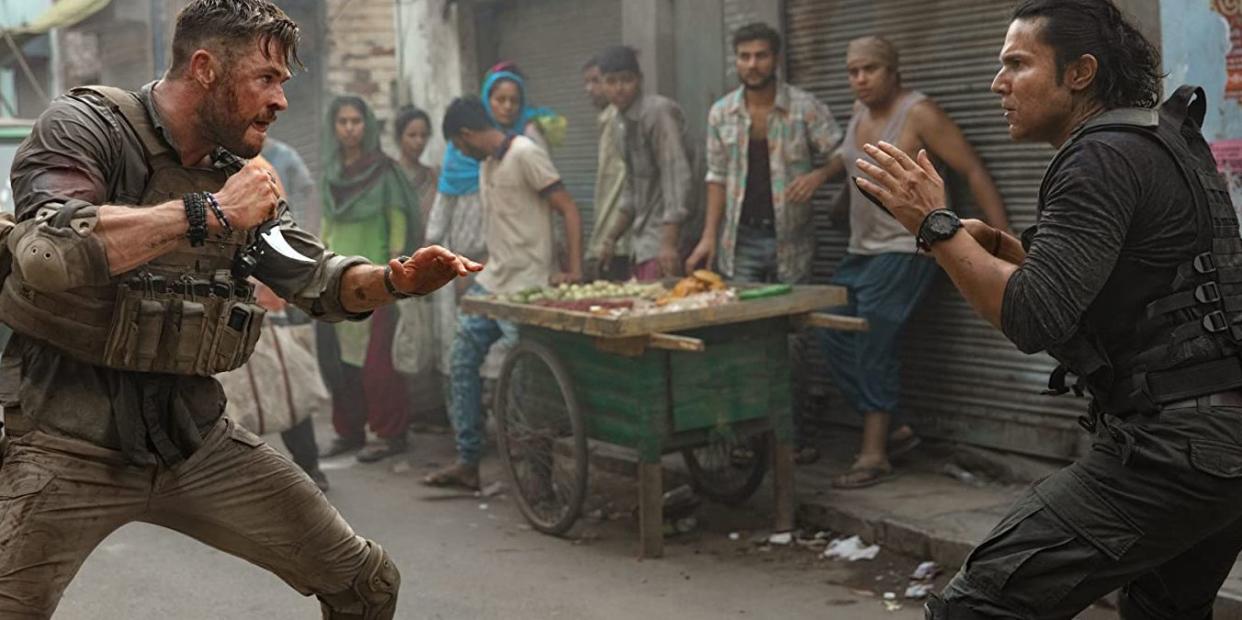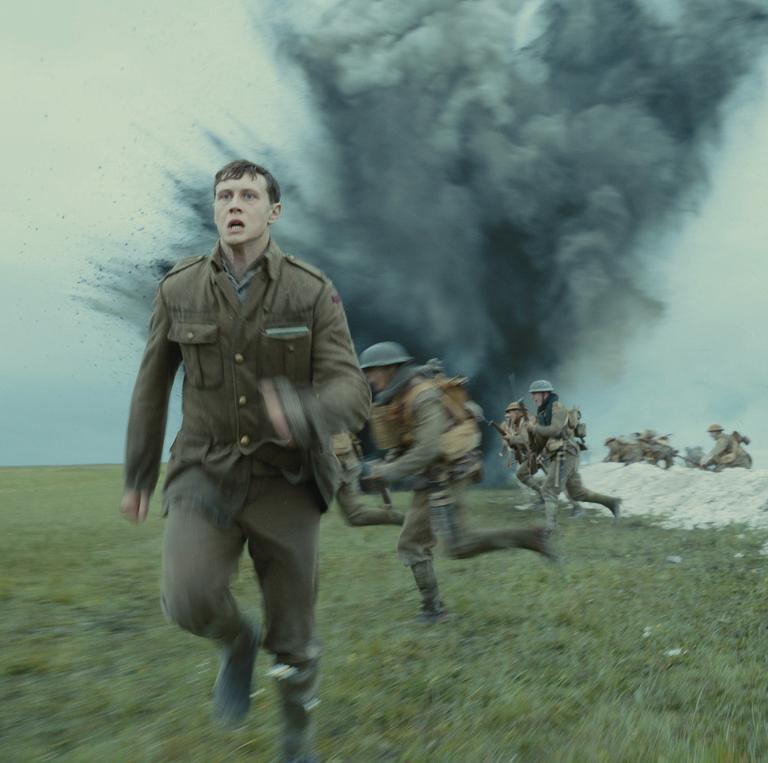Here's How 'Extraction' Pulled Off That 12-Minute Continuous Fight Scene

The shorthand term for that 12-minute fight scene and seemingly-unedited shot from Sam Hargrave’s Extraction is “oner.” And Extraction’s oner—where Chris Hemsworth drives, gun battles, and then faces off with Randeep Hooda—is one of the most ambitious and fearless attempts at the technique we’ve ever seen. Hargrave told Men’s Health in a recent interview that his team prepared for the scene over four months. It then took them ten days to shoot the scene on location in India. (The setting for the scene is Dhaka in Bangladesh.)
Extraction's oner is not, however, one continuous single camera shot. Instead, Hargrave called it an "apparent one take," meaning the sequence was filmed to resemble a oner. But that fact doesn't lessen the feat; even several one-minute takes stitched together makes for a formidable cinematographic challenge.
To film the scene, Hargrave strapped himself to the front of various chase vehicles and even leapt across a building on a wire. (As a stunt actor, Hargrave is used to such vehicle and rooftop work, and if he wasn’t the film's actual director, one may call his efforts "stunt camerawork.") The only respite came during the few edits that the team made where they could take a breather, including when Hemsworth kicks in a door or when two fighters tumble out of a window.
But the fatigue of the scenes only adds to its cinematic realism (though maybe not bodily-injury realism). As Hargrave explains:
Part of the benefit of doing a longer, extended action sequence is that your performers aren’t just doing it for four or five minutes before you cut and they get to rest. By the time you get to the end, there's not a lot of acting required—the performers are really tired.
But as cool and effectively tiring as they seem, oners aren't always the best camera techniques. Also called a “tracking” shot, the oner can either be a tool or a crutch—with some filmmakers relying too heavily on the novelty of the technique to sell a scene, or a movie.
Entire films, like Sam Mendes’s 1917 (shot to resemble a oner) or Victoria (actually shot in a oner) use the device to capture something really special; those films are written and structured to accommodate that technique, and both use it to communicate something about warfare or city life that a traditionally-edited film can’t achieve—at least in the same way.

Other great one-take scenes from the past few years include Alejandro Iñárritu's
in The Revenant and Birdman, Gaspar Noé's in Climax, Cary Fukunaga’s in the first season of True Detective (also on the TV front: Daredevil), and Bi Gan's in Long Day’s Journey Into Night. Some of the best of all time include Alfonso Cuarón's work in Children of Men, Joe Wright's in Atonement, and Steven Spielberg’s subtle and efficient usage in basically everything. (We should note that it's usually the director of photography or the cinematographer who's responsible for turning the oner into a reality. Emmanuel Lubezki deserves a special shoutout for his work, as does Roger Deakins and for many of the movies above.)
But sometimes the oner can be show-off-ish and unnecessary. In the action genre, it can even ruin fight scenes, especially when actors aren’t trained professionals. (The fight scenes from M. Night Shyamalan's The Last Airbender and Rian Johnson’s Star Wars: The Last Jedi are examples of the latter. For an antidote to these, check out The Raid films.)
In Extraction, the oner works because, like 1917, it contributes to the film's immersive agenda. It's also able to vary set pieces and punctuate lateral movements with steadier moments and frames, helping keep the action from becoming redundant.
And as far as we know, Hargrave’s use of the oner (or the faux-oner) to transition from these different action set pieces (a car chase to a stairwell/hallway thriller to a street fight) hasn’t been done much before in this genre, if at all. It’s by far the most exciting moment in the film, which transitions back to action film tropes almost immediately after the camera finally cuts.
You Might Also Like

